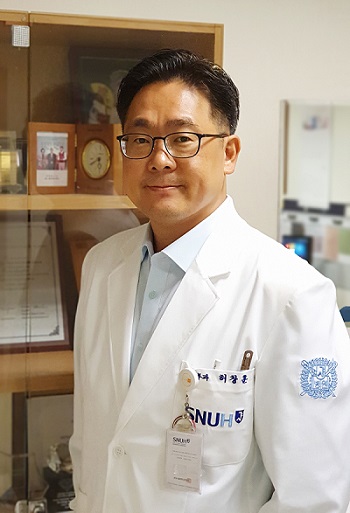[Prof. Huh’s Talk on Dermatologic Medical Devices] LaserOptek ② Phototherapy Lasers

In ancient Egypt and India, treating skin diseases with materials found in nature was tried even though there were no accurate treatments. These methods had passed on via Ebers Papyrus, and some parts were reinterpreted and are being used today.
Light has been used to treat skin diseases 3,500 years ago. Vitiligo has been treated by sunbathing with eating certain plant extracts or seeds and psoralen, a photosensitizer (light-sensitive compound), is isolated later and used as a main phototherapy remedy today.
Modern phototherapy had been advanced by Niels Finsen, who used phototherapy for scrofuloderma and won the Nobel Prize in 1903. Then phototherapies with tar by William Goeckerman, anthralin by John Ingram, and psoralen (PUVA) have been applied.
Diseases proved efficacies of phototherapy are vitiligo (skin became white because of the local pigment loss), psoriasis (characterized by hyperkeratosis and scales due to abnormal multiplication of skin cells), cutaneous T cell lymphoma, atopic dermatitis, alopecia areata, etc.
After Parrish and Jaenicke discovered that 313nm wavelengths are the best for treating psoriasis, the narrowband UVB, which uses the wavelengths of 311-313nm, has begun to be standard phototherapy.
Phototherapy is beneficial to various skin diseases; however, long-term irradiation of UV rays increases the possibility of skin cancer and photoaging. To minimize these problems, irradiation of narrowband UV rays on the only affected lesion is ideal, but routine phototherapy irradiates all parts of the skin within a certain area, thus those adverse effects are hard to avoid.

Hence, irradiating a strong light only on the affected lesion is the ideal phototherapy, and the best tool for this is a laser. The first laser used for these purposes was an excimer laser, which emits 308nm wavelengths of xenon gas and treated many patients with psoriasis and vitiligo. But, a problem of its maintenance cost because of the gas used, and the wavelengths are a little shorter than 311nm—the best wavelength for the treatment—were often pointed out from excimer laser.
LaserOptek is reporting many clinical effects by inventing the world’s first “Pallas,” a laser device that is closer to existing UV rays therapy theory, and maintenance cost is much less as a solid-state.
Pallas is a titanium sapphire laser, creating 933nm wavelengths of laser beams but reduce 1/3 of its wavelength by third-harmonic generation technology. 311nm wavelengths are not only even closer to the 313nm wavelengths, which are well known as the most effective wavelengths on psoriasis, but also it can penetrate deep into the skin.
Moreover, Pallas has 1.7 times more minimal erythema doses (MED) than other lasers, and that it can irradiate stronger with more benefits and fewer side effects. Just like conventional NBUVB treatments, indications of this laser include various autoimmune diseases such as psoriasis, vitiligo, atopic dermatitis, and alopecia areata.
These clinical effects have been reported on leading SCI journals such as the Journal of the American Academy of Dermatology, Lasers in Medical Science, JAMA Dermatology, Photodermatology, Photoimmunology & Photomedicine, and others.


